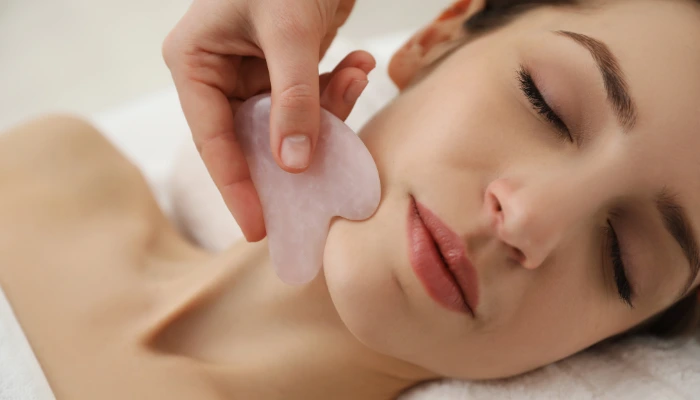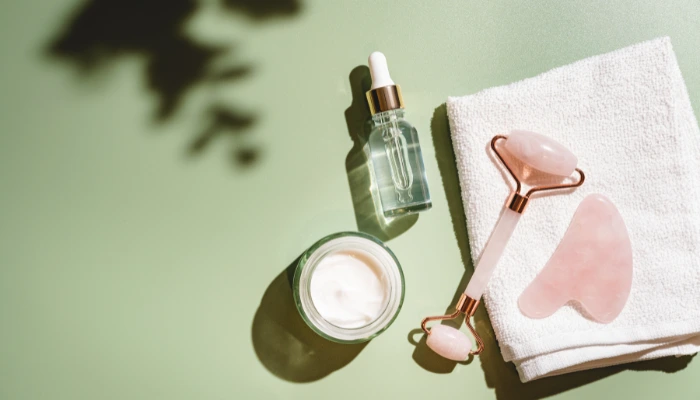An age-old Chinese healing tradition, gua sha involves scraping the skin to improve blood flow and promote healing. With roots tracing back to antiquity, gua sha is growing increasingly popular as a modern wellness and beauty treatment. Images of dramatic gua sha before and after transformations demonstrate the technique’s purported benefits, from reduced inflammation to brighter, tighter skin.
This blog explores the history and methodology of gua sha face, as well as what one can expect from gua sha before and after their first treatment.
What is Gua Sha?
Gua sha (pronounced “gwa shah”) translates to “scraping sand” in Chinese. The term refers to the visibly sandy appearance of small red or purple dots that emerge on the skin after gua sha scraping. Performed correctly, a gua sha treatment involves lightly and repeatedly scraping the skin with a smooth-edged instrument made of jade, horn, or other material.
While its exact origins are unknown, gua sha-like therapies date back over 2,000 years in China. References appear in ancient Chinese medical texts, associating scraping and spooning the skin with improved “qi” (energy) flow and reduced pain or illness. Over generations, gua sha became a therapeutic folk remedy and a regular part of doctor-administered treatments.
Modern Research on Benefits:
Today, gua sha enjoys growing popularity outside China as both an at-home wellness ritual and clinical therapy. Advocates believe it provides anti-inflammatory and immune-boosting effects by stimulating microcirculation under the skin.
Scientific studies on gua sha suggest it may offer certain benefits, including:
- Temporary pain relief
- Reduced muscle soreness
- Improved range of motion
- Decreased inflammatory immune response
- Increased microperfusion of surface tissue
However, more research is still needed to comprehensively evaluate its efficacy.
What to Expect: Gua Sha Before and After
Gua sha novices are often stunned by the dramatic gua sha before and after photos depicting intense skin redness and bruising immediately post-treatment. This phenomenon is caused by extravasated blood from superficial capillaries and is considered normal. The vibrant markings fade within a few days as the blood gets reabsorbed.
Other visible gua sha before and after differences may include:
- Brighter, glowing complexion
- Reduction of fine lines/wrinkles
- Minimized dark undereye circles
- Firmer-looking facial contours
- The softened appearance of cellulite
Subjective benefits reported after gua sha include feeling energized, relaxed, and free of muscle aches or stiffness. While a single gua sha session delivers instant effects, many believers consider regular gua sha the key to radiant, youthful skin. Some even attest to positive impacts on chronic issues like digestion problems or insomnia after long-term gua sha.
Conclusion:
With celebrity devotees like Alicia Keys bringing this ancient Asian therapy into popular culture, gua sha continues gaining momentum internationally. And truly dramatic gua sha before and after images will likely propel its popularity further. However, more research is still necessary to validate efficacy claims beyond the cosmetic realm. Most experts recommend approaching gua sha anecdotally, carefully evaluating individual experiences over making assumptions. Those curious to experience this ancient ritual can now easily acquire affordable gua sha tools online or through beauty retailers, like the popular jade wellshop gua sha tool said to reduce inflammation. As gua sha makes its way into the modern wellness scene, the wealth of anecdotal gua sha before and after stories seems poised to drive this unique therapy into the mainstream.
Also Check: GUA SHA GUASHA FACE MASSAGE

